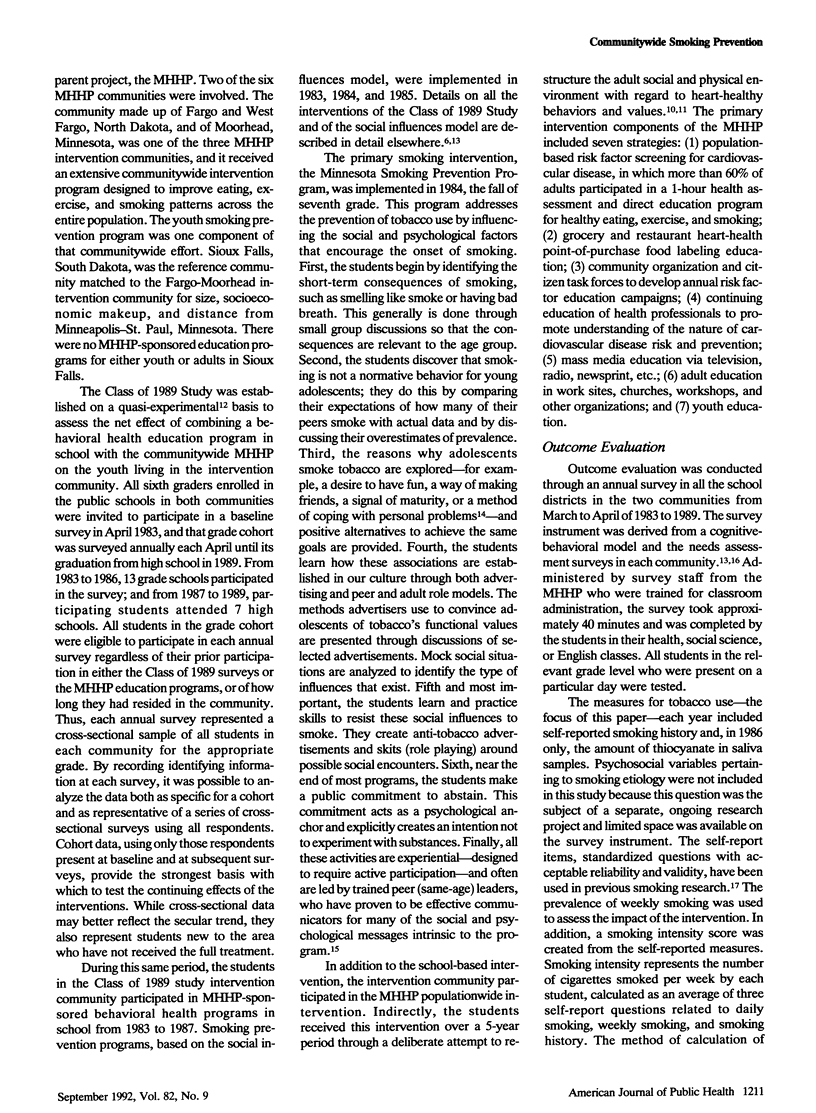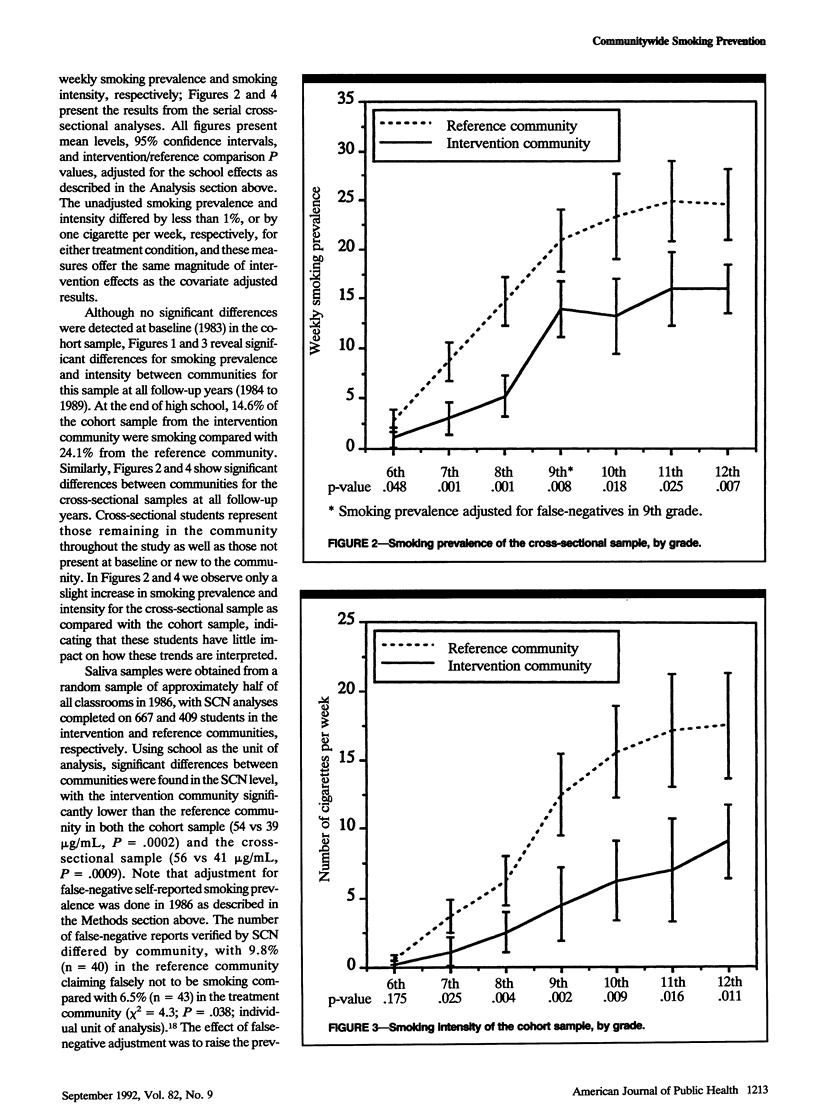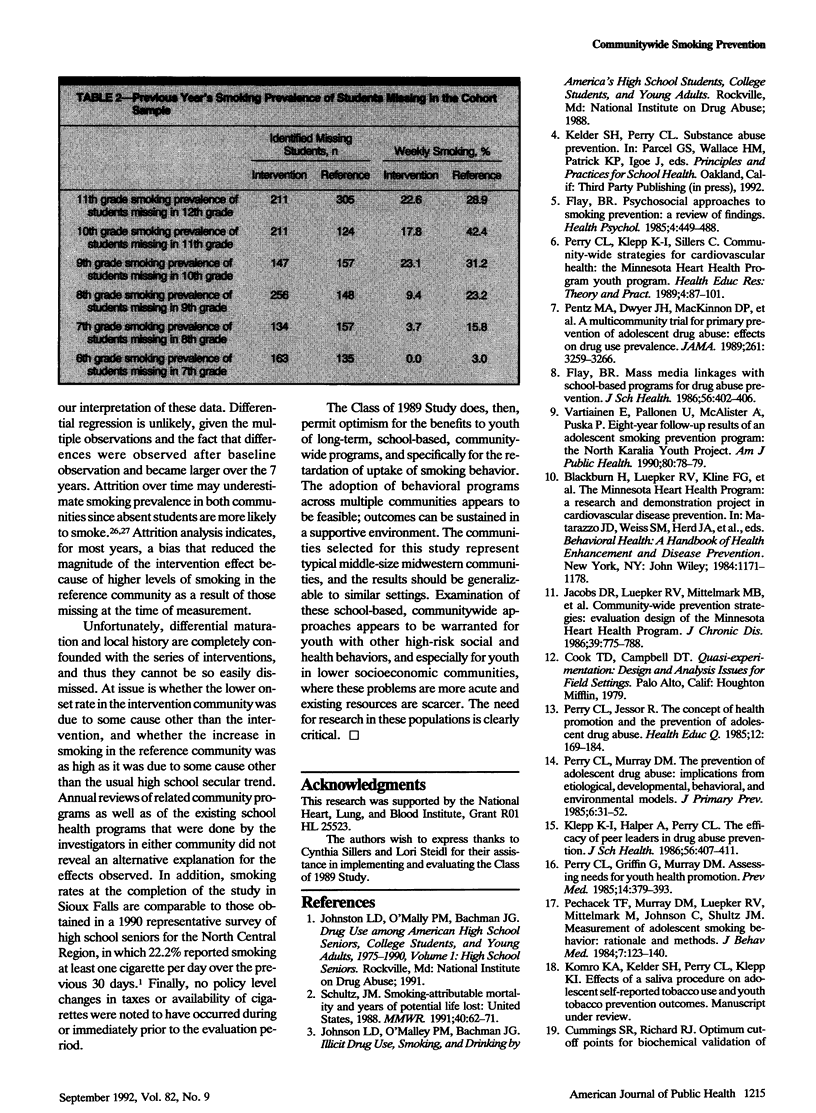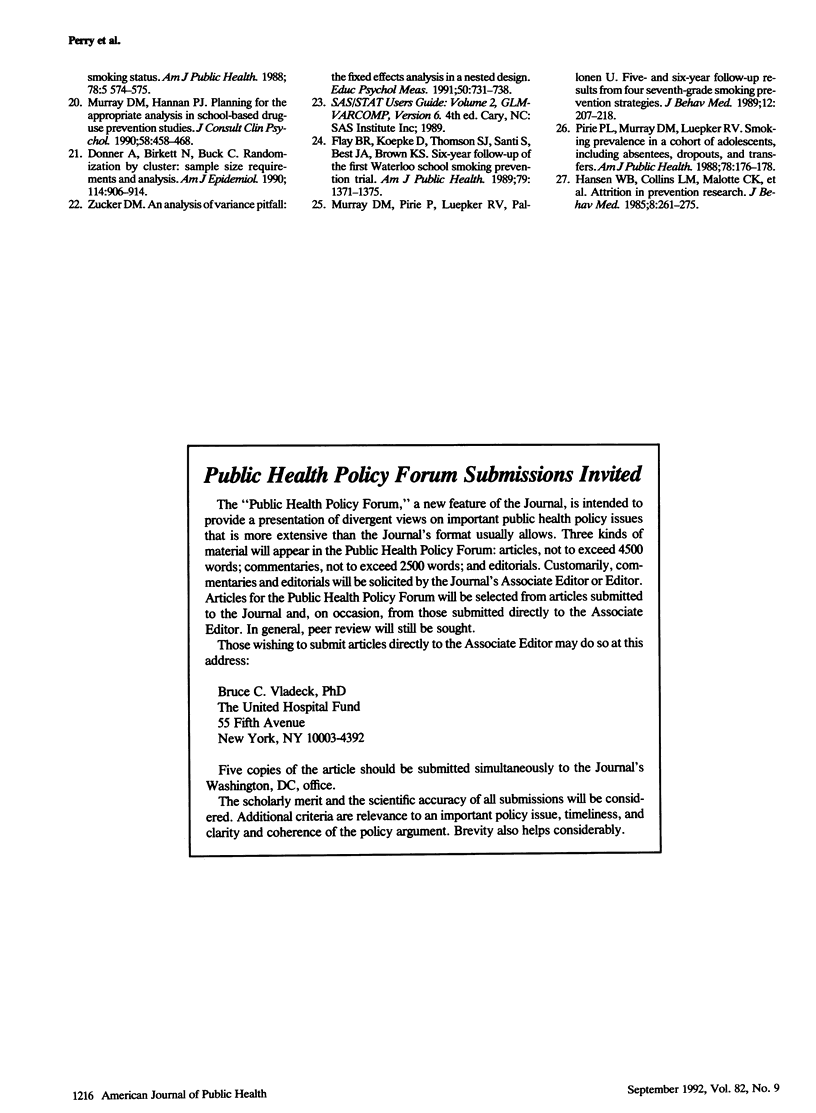Abstract
OBJECTIVES. The Class of 1989 Study is part of the Minnesota Heart Health Program (MHHP), a populationwide research and demonstration project designed to reduce cardiovascular disease in three educated communities from 1980 to 1993. This paper describes an intensive, school-based behavioral intervention on cigarette smoking, comparing long-term outcomes in one of the intervention communities with those in a matched reference community. METHODS. Beginning in sixth grade (1983), seven annual waves of cohort and cross-sectional behavioral measurements were taken from one MHHP intervention community and its matched pair. All students in each community were eligible to participate (baseline n = 2401). Self-reported data collected at each period described prevalence and intensity of cigarette smoking. RESULTS. There were no differences at baseline for either weekly smoking prevalence or intensity of smoking. Throughout the follow-up period, however, smoking rates as determined by these measures were significantly lower in the intervention community: 14.6% of students were weekly smokers at the end of high school compared with 24.1% in the reference community. CONCLUSIONS. These results suggest that multiple intervention components such as behavioral education in schools, booster programs to sustain training, and complementary communitywide strategies may all be needed for lasting reductions in adolescent tobacco use.
Full text
PDF






Selected References
These references are in PubMed. This may not be the complete list of references from this article.
- Centers for Disease Control (CDC) Smoking-attributable mortality and years of potential life lost--United States, 1988. MMWR Morb Mortal Wkly Rep. 1991 Feb 1;40(4):62-3, 69-71. [PubMed] [Google Scholar]
- Donner A., Birkett N., Buck C. Randomization by cluster. Sample size requirements and analysis. Am J Epidemiol. 1981 Dec;114(6):906–914. doi: 10.1093/oxfordjournals.aje.a113261. [DOI] [PubMed] [Google Scholar]
- Flay B. R., Koepke D., Thomson S. J., Santi S., Best J. A., Brown K. S. Six-year follow-up of the first Waterloo school smoking prevention trial. Am J Public Health. 1989 Oct;79(10):1371–1376. doi: 10.2105/ajph.79.10.1371. [DOI] [PMC free article] [PubMed] [Google Scholar]
- Flay B. R. Mass media linkages with school-based programs for drug abuse prevention. J Sch Health. 1986 Nov;56(9):402–406. doi: 10.1111/j.1746-1561.1986.tb05782.x. [DOI] [PubMed] [Google Scholar]
- Flay B. R. Psychosocial approaches to smoking prevention: a review of findings. Health Psychol. 1985;4(5):449–488. doi: 10.1037//0278-6133.4.5.449. [DOI] [PubMed] [Google Scholar]
- Hansen W. B., Collins L. M., Malotte C. K., Johnson C. A., Fielding J. E. Attrition in prevention research. J Behav Med. 1985 Sep;8(3):261–275. doi: 10.1007/BF00870313. [DOI] [PubMed] [Google Scholar]
- Jacobs D. R., Jr, Luepker R. V., Mittelmark M. B., Folsom A. R., Pirie P. L., Mascioli S. R., Hannan P. J., Pechacek T. F., Bracht N. F., Carlaw R. W. Community-wide prevention strategies: evaluation design of the Minnesota Heart Health Program. J Chronic Dis. 1986;39(10):775–788. doi: 10.1016/0021-9681(86)90080-9. [DOI] [PubMed] [Google Scholar]
- Klepp K. I., Halper A., Perry C. L. The efficacy of peer leaders in drug abuse prevention. J Sch Health. 1986 Nov;56(9):407–411. doi: 10.1111/j.1746-1561.1986.tb05783.x. [DOI] [PubMed] [Google Scholar]
- Murray D. M., Pirie P., Leupker R. V., Pallonen U. Five- and six-year follow-up results from four seventh-grade smoking prevention strategies. J Behav Med. 1989 Apr;12(2):207–218. doi: 10.1007/BF00846551. [DOI] [PubMed] [Google Scholar]
- Pechacek T. F., Murray D. M., Luepker R. V., Mittelmark M. B., Johnson C. A., Shutz J. M. Measurement of adolescent smoking behavior: rationale and methods. J Behav Med. 1984 Mar;7(1):123–140. doi: 10.1007/BF00845351. [DOI] [PubMed] [Google Scholar]
- Pentz M. A., Dwyer J. H., MacKinnon D. P., Flay B. R., Hansen W. B., Wang E. Y., Johnson C. A. A multicommunity trial for primary prevention of adolescent drug abuse. Effects on drug use prevalence. JAMA. 1989 Jun 9;261(22):3259–3266. [PubMed] [Google Scholar]
- Perry C. L., Griffin G., Murray D. M. Assessing needs for youth health promotion. Prev Med. 1985 May;14(3):379–393. doi: 10.1016/0091-7435(85)90064-7. [DOI] [PubMed] [Google Scholar]
- Perry C. L., Jessor R. The concept of health promotion and the prevention of adolescent drug abuse. Health Educ Q. 1985 Summer;12(2):169–184. doi: 10.1177/109019818501200204. [DOI] [PubMed] [Google Scholar]
- Pirie P. L., Murray D. M., Luepker R. V. Smoking prevalence in a cohort of adolescents, including absentees, dropouts, and transfers. Am J Public Health. 1988 Feb;78(2):176–178. doi: 10.2105/ajph.78.2.176. [DOI] [PMC free article] [PubMed] [Google Scholar]
- Vartiainen E., Fallonen U., McAlister A. L., Puska P. Eight-year follow-up results of an adolescent smoking prevention program: the North Karelia Youth Project. Am J Public Health. 1990 Jan;80(1):78–79. doi: 10.2105/ajph.80.1.78. [DOI] [PMC free article] [PubMed] [Google Scholar]


